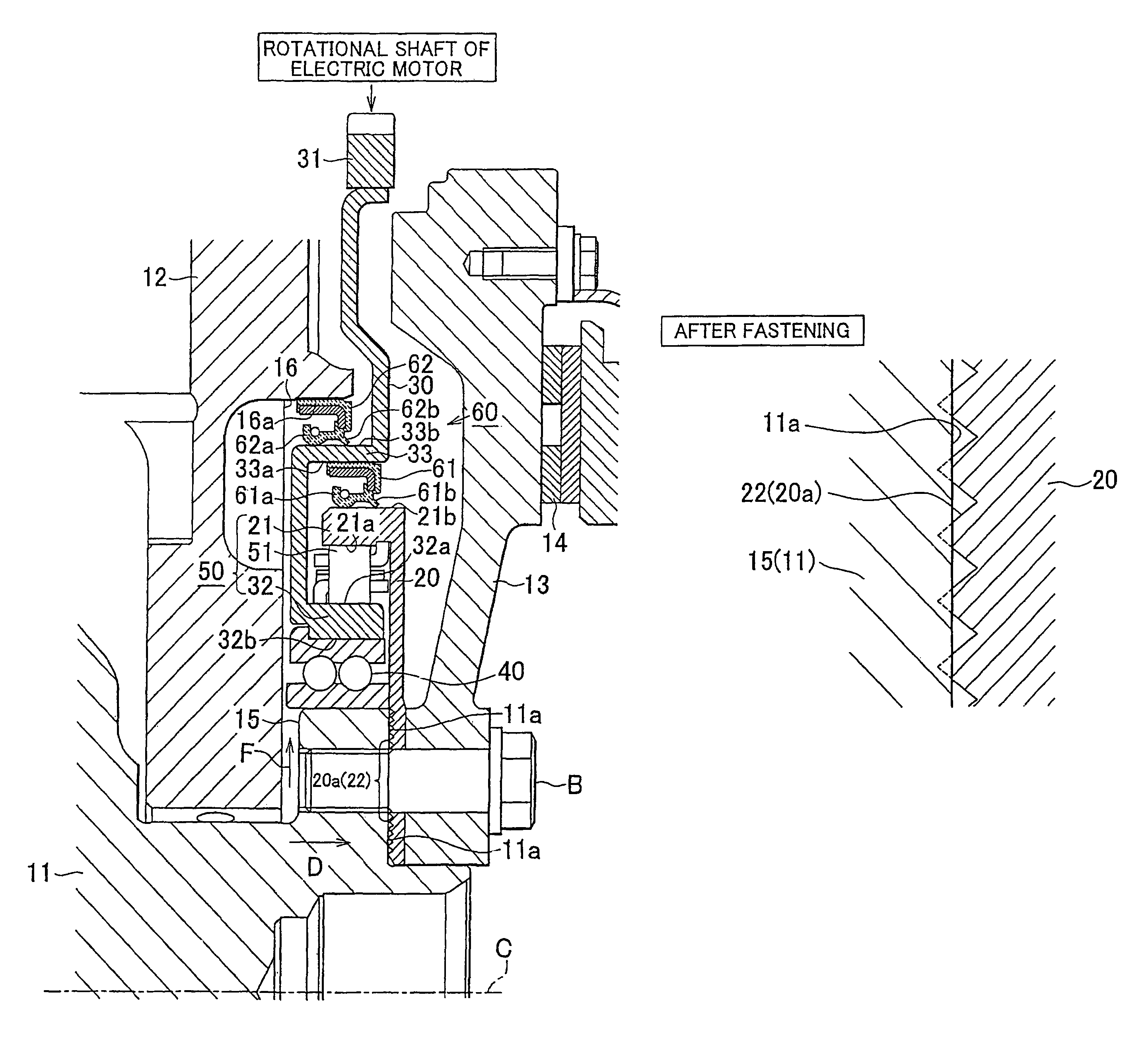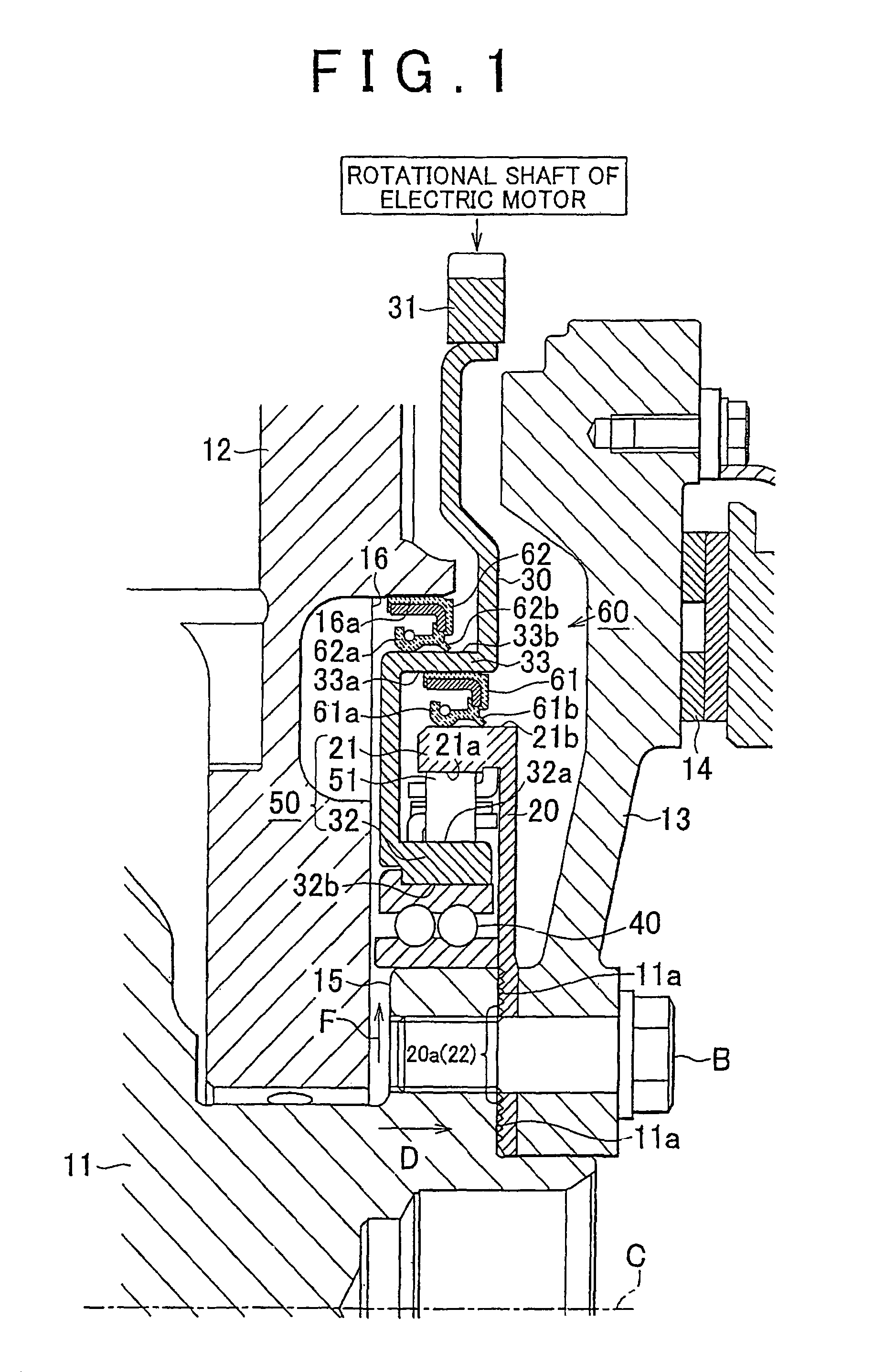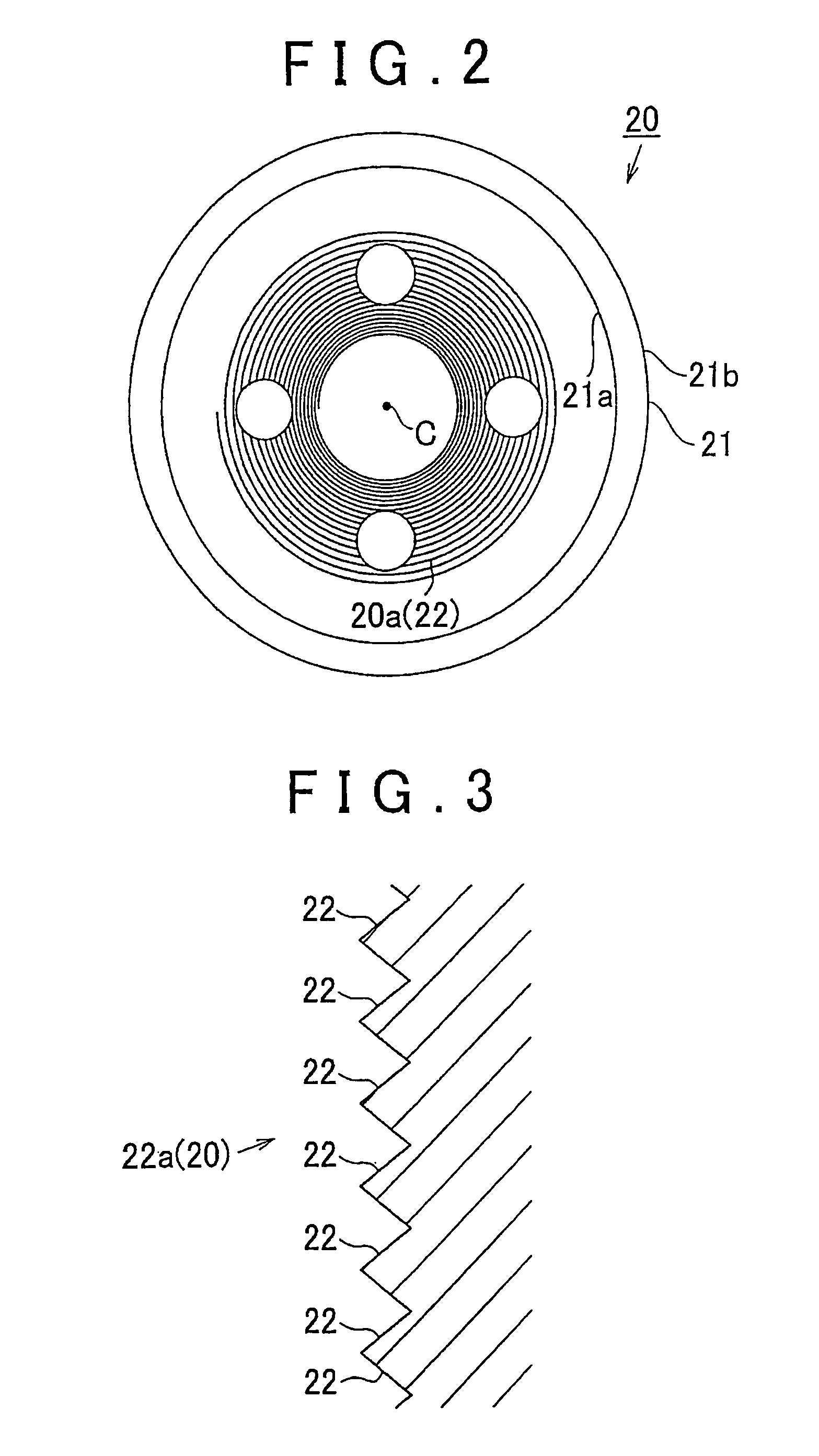Starter for internal combustion engine
a technology for starting engines and internal combustion engines, which is applied in the direction of engine starters, couplings, machines/engines, etc., can solve the problems of excessive deformation of sealing parts, hardly allowing lubricant to leak from the mounted portion of the engine-side power transmission mechanism, and disconnection between the engine output shaft and the electric motor, so as to enhance the sealing performance of the power transmission mechanism and high coupling strength
- Summary
- Abstract
- Description
- Claims
- Application Information
AI Technical Summary
Benefits of technology
Problems solved by technology
Method used
Image
Examples
Embodiment Construction
[0028]The following describes a starter for an internal combustion engine according to one embodiment of the invention. FIG. 1 shows a sectional structure of a power transmission mechanism and its surrounding area in the starter for an internal combustion engine according to the embodiment of the invention.
[0029]FIG. 1 only illustrates one side (upper side) of the power transmission mechanism with respect to the axis C of the crankshaft 11, which is output shaft of the internal combustion engine. In addition, FIG. 1 solely shows cross sections of components other than the crankshaft 11, a cylinder block 12, and a bolt B.
[0030]As shown in FIG. 1, the crankshaft 11 is rotatably supported between the cylinder block 12 and a ladder beam (not shown) in the internal combustion engine. A flywheel 13, an outer race plate 20, and a ring gear 30 are mounted on one end of the crankshaft 11.
[0031]The flywheel 13 is formed into an approximately disc shape having a circular opening at the center....
PUM
 Login to View More
Login to View More Abstract
Description
Claims
Application Information
 Login to View More
Login to View More - R&D
- Intellectual Property
- Life Sciences
- Materials
- Tech Scout
- Unparalleled Data Quality
- Higher Quality Content
- 60% Fewer Hallucinations
Browse by: Latest US Patents, China's latest patents, Technical Efficacy Thesaurus, Application Domain, Technology Topic, Popular Technical Reports.
© 2025 PatSnap. All rights reserved.Legal|Privacy policy|Modern Slavery Act Transparency Statement|Sitemap|About US| Contact US: help@patsnap.com



